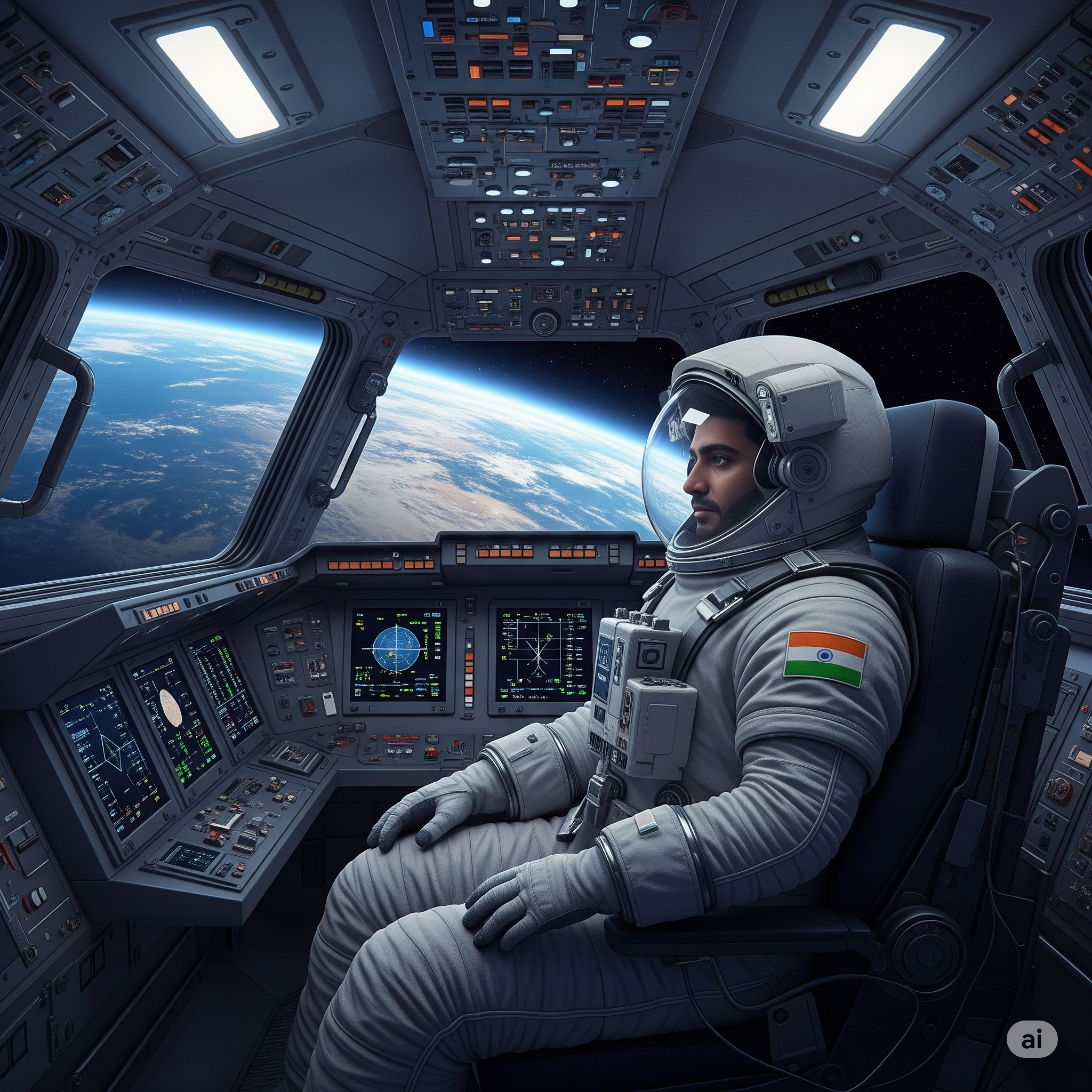A New Chapter in India’s Space Journey
India’s space ambitions just got a major boost—and a human face. Wing Commander Shubhanshu Shukla has been selected to participate in Axiom-4, a private space mission headed to the International Space Station (ISS). His journey will not only mark a historic milestone for India’s presence in human spaceflight but also set the stage for ISRO’s upcoming Gaganyaan mission.
This moment isn’t just about symbolism—it’s about testing systems, training astronauts, and proving readiness for more ambitious goals, including crewed spaceflights, long-term orbital missions, and future collaborations with international space agencies.
🧑🚀 Who is Shubhanshu Shukla?
Shubhanshu Shukla is a decorated Indian Air Force (IAF) pilot and one of the four test pilots selected by ISRO for astronaut training for Gaganyaan, India’s first crewed space mission.
Quick Facts:
- Rank: Wing Commander
- Training: Completed basic astronaut training at Gagarin Cosmonaut Training Center, Russia
- Specialization: High-altitude flight, survival systems, G-force endurance
- Known for: Calm precision under pressure—key for astronauts in space
His inclusion in Axiom-4, a NASA-approved commercial mission to the ISS, provides India with its first practical test of space crew performance in international, real-orbit conditions.
🚀 What is the Axiom-4 Mission?
Axiom-4 is the fourth private astronaut mission launched by Axiom Space, a U.S.-based private space company working with NASA. The mission uses a SpaceX Crew Dragon capsule to transport astronauts to the ISS for up to 14 days.
Key Objectives:
- Conduct scientific research in microgravity
- Test life support systems and biomedical responses
- Simulate long-duration orbital stays
- Practice international space station docking and operations
India’s participation through Shukla marks a collaborative leap in space diplomacy and skill development.
🛰️ Gaganyaan: India’s First Human Spaceflight Mission
Gaganyaan, meaning “Sky Vehicle” in Sanskrit, is India’s flagship crewed space mission led by ISRO and funded by the Indian government.
Gaganyaan Mission Details:
- Target Year: 2025 (uncrewed test flights in 2024)
- Crew: 2–3 astronauts
- Orbit: 400 km Low Earth Orbit (LEO)
- Duration: 3–7 days
- Capsule: Gaganyaan Crew Module, developed by ISRO
- Launch Vehicle: Human-rated LVM3 (GSLV Mk III)
Shukla’s participation in Axiom-4 is widely seen as a precursor and simulation for the operational conditions astronauts will face during Gaganyaan.
🔬 Why Axiom-4 Is Crucial for India’s Space Readiness
| Advantage | Impact on India’s Space Program |
|---|---|
| 🧪 Hands-On Space Experience | First Indian astronaut in orbit in over a decade |
| 🤝 Global Collaboration | Builds ties with NASA, SpaceX, Axiom Space |
| 🛠️ System Validation | Tests medical, psychological, and technical readiness |
| 🎓 Astronaut Training | Validates training from Russia in real ISS conditions |
| 🚀 Tech Simulation | Offers insights into pressure suits, orbital docking, crew health |
🧠 Strategic Importance: Beyond the ISS
This mission is not just symbolic—it’s strategically timed and technically relevant.
- It prepares India for a future LEO space station (proposed by ISRO for 2035).
- Gives India real-time insights into orbital habitation technology.
- Sets the stage for commercial spaceflight, including space tourism, private satellites, and biomedical research.
Axiom Space has stated interest in building the world’s first commercial space station—India’s cooperation may become essential to gain early footholds in such global space infrastructure.
🇮🇳 India’s Human Spaceflight Timeline: A Quick Look
| Year | Milestone |
|---|---|
| 1984 | Rakesh Sharma becomes India’s first astronaut aboard Soyuz T-11 |
| 2009 | ISRO proposes first human spaceflight program |
| 2018 | Gaganyaan formally announced by PM Modi |
| 2021 | Astronauts begin training in Russia |
| 2023 | ISRO conducts Crew Module Atmospheric Re-entry Test |
| 2024 | Uncrewed Gaganyaan test flights planned |
| 2025 | Crewed Gaganyaan mission planned |
| 2025 | Shukla’s Axiom-4 mission enhances readiness |
🧬 Science Goals of Axiom-4: A Win for Indian Research
India will gain access to:
- Microgravity biomedical research
- Space-based materials testing
- Radiation shielding analysis
- Data for future ISRO-built life-support systems
This opens the door to more academia-industry-ISRO collaboration, creating space-specific research pipelines in medicine, nutrition, and electronics.
🧱 What India Still Needs to Strengthen
| Gap | Needed Action |
|---|---|
| 🚧 Infrastructure | Establish dedicated astronaut research centers in India |
| 🧪 R&D | Develop indigenous space suits, exercise systems, AI-enabled onboard diagnostics |
| 👨🏫 Talent Development | Train new cohorts of mission specialists, not just pilots |
| 🛰️ Space Habitats | Prototype life-support tech for long-duration stays |
| 🪐 Vision Roadmap | Align Gaganyaan with lunar and interplanetary missions |
💬 Global Voices: What Experts Are Saying
“India joining missions like Axiom-4 is not just symbolic—it’s a real test of international space cooperation and capability.”
— Dr. Rajeswari Rajagopalan, ORF Space Policy Expert
“Training one astronaut through a commercial space mission is smarter and faster than waiting to develop everything from scratch.”
— Aerospace analyst, Aviation Week
🛰️ Final Thoughts: One Mission, Many Ripples
Shubhanshu Shukla’s journey aboard Axiom-4 is more than just a ride to the ISS. It’s a signal that India is no longer catching up—it’s catching on to the future of space exploration.
Gaganyaan is no longer a concept—it’s a countdown. Missions like Axiom-4 are the test runs that will shape India’s next-gen spaceflight protocols, astronaut training, and even space commerce policy.
🚀 “From Varanasi to the vacuum of space—India’s leap is powered not just by rockets, but by readiness.”









+ There are no comments
Add yours